How to Get Off MATCH List: 3 Ways
January 24, 2025
I Don’t Know Why I Am On The MATCH List. What Do I Do?
March 12, 2025Mastercard MATCH List: Your Questions Answered
The Mastercard MATCH List is a database of businesses, also known as merchants, who have been deemed as “high-risk” for violating one of Mastercard’s reason codes. If you have been placed on the MATCH List, your merchant account has been terminated, or you have been denied a new merchant account, you likely have a lot of questions. At TFM Law, we are MATCH List experts and have compiled a list of Mastercard MATCH List FAQs to help you on your journey. Keep reading to learn the answers to our most frequently asked questions regarding how the Mastercard MATCH List works, including how to get removed from the MATCH List early.
What is the Mastercard MATCH List Used For?
Plain and simple: The Mastercard MATCH List is used as an industry blacklist.
If you have been placed on this list, you have been deemed as high-risk and essentially have a warning label on you for other banks and payment processors. It is highly unlikely that another bank or payment processor will want to work with you, given your status on the MATCH List, and it can be nearly impossible to continue conducting business.
While there are high-risk payment processors out there that accept high-risk businesses, there is no guarantee they will want to work with you. If you get “lucky,” you will find yourself paying very high fees and getting locked into a very lengthy contract. High-risk processors usually work with merchants that are inherently high-risk, such as smoke shops, subscription services, crypto companies, and more. If you are high-risk because of being on the MATCH List, this is a very different story for most processors, and you will find that it is very difficult to move forward on this path.
How Does The Mastercard MATCH List Work?
Mastercard Alert To Control High-risk Merchants (MATCH Pro) lets an acquiring partner look up whether another acquiring partner has terminated a merchant in the past and the reason for said termination to help with an onboarding decision.
Here’s how inquiries work for prospective banks:
- Prior to executing the merchant agreement, the Acquirers submit an inquiry to the MATCH Pro API that includes information on a merchant and the associated principal owner(s).
- MATCH Pro searches the database for possible matches between the merchant information provided in the inquiry and information related to merchants added to MATCH Pro by other Acquirers during the past five years.
- MATCH Pro returns details of possible merchants found listed in MATCH; the response indicates if each search result is based on an exact MATCH Pro or phonetic matches to each of the data elements provided by the acquirer.
In order to add a merchant to the MATCH List, the following steps must be taken:
- Within 5 days of the decision to terminate a merchant that meets one of the MATCH Pro reasons codes, the Acquirer submits an additional record to the MATCH Pro API that includes information on the merchant and the associated principal owner(s), and the applicable reason code.
- The record is added to MATCH Pro and made available to all other acquirers in real-time.
- MATCH Pro returns a confirmation to the acquirer that the merchant was successfully added and provides a MATCH Pro Reference Number.
Why is The MATCH List Important?
The MATCH List is important for many reasons. The two biggest reasons include protecting banks from potential fraud and other risks and protecting consumers from unscrupulous businesses that aren’t run to Mastercard’s standards.
It was created to be robust, comprehensive, difficult to access, difficult to find a loophole, and difficult to remove yourself from by design. The Mastercard MATCH List includes a ton of information to ensure that the business owner can’t simply open a new business with a new name in order to keep their business moving forward.
The most common reasons that businesses are placed on the MATCH List are due to excessive chargebacks, PCI noncompliance, and fraud. Mastercard wants to ensure safety and security for banks and consumers alike, and holding businesses accountable for their actions via the MATCH List is one way of doing this. However, there are many ways to get placed on the list through no fault of your own, such as fraud, identity theft, error, and more.
What Happens When a Business is Placed On the MATCH List?
There are several things that happen when a business is placed on the MATCH List. They include:
- The merchant account is terminated
- The merchant is unable to open a new merchant account
- Credit card payments and wire payments can no longer be accepted
- A long list of personal information is placed on the MATCH List
- The penalty for being placed on the MATCH List is remaining on it for up to five years
The tricky part about the MATCH List is that you may never know why or how you were placed on it. Banks, Mastercard, and your payment processor have absolutely no obligation to alert you to the fact that you’ve been placed on the list, to tell you why if you ask, or to give you a chance to prove your case for removal.
The most common way people find out they have been placed on the MATCH List is because one of their payment processors lets them know their account has been terminated. Mastercard itself does not put you on the MATCH List; this is done by your bank.
What Information is On The MATCH List?
There is a long list of required fields that a bank must put into the MATCH List API in order to add you to it. It includes:
- Business name in all forms, including all legal names and DBAs
- Business address
- Phone numbers
- Tax ID number
- Owner names
- Owner addresses
- Owner phone numbers
- Associate names
- Associate addresses
- Associate phone numbers
- Reason for termination
- Merchant account information
- Business URLs
The list is comprehensive, allowing no wiggle room for opening a new business under a new name, address, or other information. In order to get added to the MATCH List, all of this information must be filled out by an individual at the bank. As such, there is little chance that you were added in complete error; however, it does happen, especially in cases of identity fraud.
Can I Search the Mastercard MATCH List?
Unfortunately, there is no way to search the Mastercard MATCH List unless you are an acquiring bank or payment processor.
You cannot search the list to see if you are on it, why you are on it, when you were added, or any other information regarding you and your business being on the MATCH List.
The only way to find out this information is to call your bank and simply ask. However, they have absolutely no obligation to tell you any of this information. This is why navigating the MATCH List is so challenging—you get hit with brick wall after brick wall.
Early MATCH List Removal with TFM Law
If you have found yourself on the Match List, suspect that you are on it, or need answers as to why your merchant account has been terminated, you have options.
You do NOT need to wait for the five-year penalty period to be over. You can seek early removal and get back to business ASAP.
The Law Offices of Theodore Monroe focuses on litigation and counseling in the areas of payments, credit card processing, e-commerce, direct response marketing, and Federal Trade Commission enforcement. Last year, the firm removed 100% of the people who came to us from the MATCH list.
Theodore F. Monroe, Founder of TFM Law, has successfully:
- Represented merchants recovering funds from processors
- Structured processing relationships to comply with Card Brand requirements
- Drafted and negotiated contracts involving payment facilitators and ISOs
- Represented continuity merchants in compliance and litigation issues
- Fought for numerous companies in suits brought by the Federal Trade Commission and obtained excellent results for firms in the digital products, loan modification, government grant, and nutraceuticals industries
Before opening his firm, Mr. Monroe practiced law with Crosby, Heafey, Roach & May (now Reed Smith LLP) and Lewis, D’Amato, Brisbois & Bisgaard (now Lewis, Brisbois, Bisgaard & Smith), where he defended numerous accounting and law firms in professional liability actions, and insurance carriers in bad faith actions.
Before becoming a lawyer, Mr. Monroe worked as a forensic accountant at Coopers & Lybrand, which provided him with a unique background in forensic accounting and financial analysis among litigators in Los Angeles. Mr. Monroe studied at Duke University Law School, achieved a BS with Honors in Accounting from the University of Kentucky, and is a member of the California State Bar and the Kentucky State Bar.
For more information, visit us at HowToGetOffMATCH.com!




